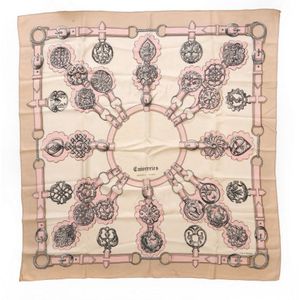Imperial Yellow Dragon Brocade Panel
Rare Chinese Qing Dynasty, 18th century, imperial yellow brocade dragon panel, depicting large profile five claw dragons cavorting in the cloud filled sky with auspicious symbols in the wave border, in tones of yellow, blue, green, orange and white, early conservation,. Provenance: Collection of Judith Rutherford
You must be a subscriber, and be logged in to view price and dealer details.
Subscribe Now to view actual auction price for this item
When you subscribe, you have the option of setting the currency in which to display prices to $Au, $US, $NZ or Stg.
This item has been sold, and the description, image and price are for reference purposes only.
- Ming Dynasty - The Ming Dynasty was a ruling dynasty of China from 1368 to 1644. It succeeded the Yuan Dynasty and preceded the Qing Dynasty. The Ming Dynasty was established by Zhu Yuanzhang, a former Buddhist monk who became a rebel leader and eventually overthrew the Mongol Yuan Dynasty. During the Ming Dynasty, China experienced a period of relative stability and prosperity. The government was centralized and bureaucratic, with the emperor at the top of the hierarchy. The Ming Dynasty is known for its cultural achievements, including the development of porcelain, the invention of movable type printing, and the construction of the Great Wall of China.
- Imperial Yellow - Imperial yellow, also called "Chinese Yellow" and "Royal Yellow" is an auspicious colour in Chinese culture.
It was the colour of Imperial China and the symbolic colour of of the five legendary emperors of ancient China. The colour was used to decorate royal palaces and used in the clothing of the emperors. - Imperial Yellow - Imperial yellow, also known as "yangqing" in Chinese, is a bright, intense shade of yellow that was historically reserved for the exclusive use of the Chinese imperial family. It was considered the most prestigious and luxurious of all colours, and was used to adorn a wide variety of imperial goods, including porcelain.
Chinese porcelain decorated with imperial yellow was highly prized, and was often used to create exquisite pieces of imperial tableware, such as plates, bowls, and cups. The use of imperial yellow on porcelain was a symbol of the emperor's power and authority and was intended to impress and intimidate visitors to the imperial court.
The process of creating imperial yellow porcelain involved a highly complex and labour-intensive process, which was kept secret by the imperial court. The exact recipe for the yellow glaze used on imperial porcelain is still unknown, although it is thought to have been a combination of lead, tin, and antimony, with the addition of a small amount of iron oxide to achieve the distinctive colour. - Qing Dynasty - The Qing Dynasty was the last imperial dynasty of China, ruling from 1644 to 1912. It was established by the Manchu people, who originated from the northeastern region of China. The Qing Dynasty was preceded by the Ming Dynasty and followed by the Republic of China.
This item has been included into following indexes:
Visually similar items

A silk scarf by Hermes, the 'Cuivreries' design by Francoise De la Perriere', on beige background, 90 cm square.
Sold by
in
for
You can display prices in $Au, $US, $NZ or Stg.

Japanese black lacquer and paper screen painted with foliate roundels. 174 x 180 cm
Sold by
in
for
You can display prices in $Au, $US, $NZ or Stg.

A Chinese painting hand scroll of flowers and birds, ink and colour on silk, 19th-20th century. 226 x 38.5 cm
Sold by
in
for
You can display prices in $Au, $US, $NZ or Stg.

Rare Inuit folk art needlework story board, with leopard seal trim, Eskimo. Approx 80 cm x 110 cm
Sold by
in
for
You can display prices in $Au, $US, $NZ or Stg.
